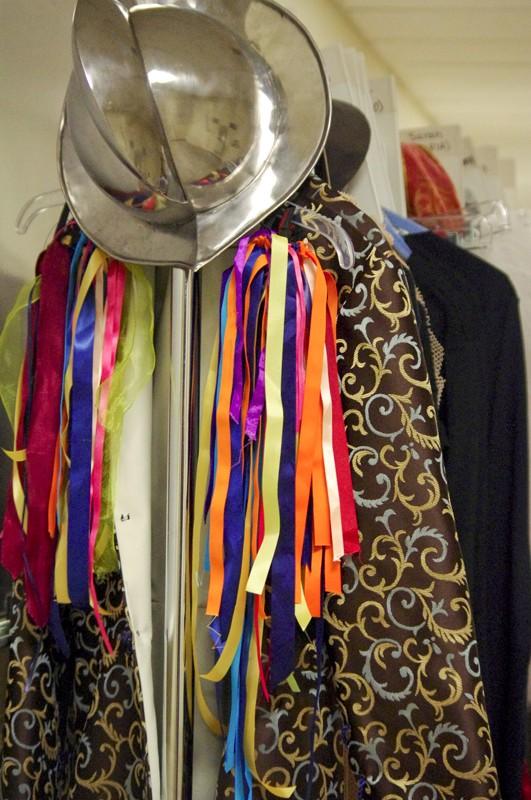The price of good art

GVL/ Amalia Heichelbech Cast costumes for the play Antona Gracia
Feb 27, 2012
When it comes to art, price is as subjective as beauty, but when it comes to making art, price of supplies can be burdensome.
The art students of Grand Valley State University already understand the cost of production, as the university does not fund supplies for art students like it does for students in other practical courses like science labs, where chemicals and other lab tools are frequently expended.
Despite the fact that most supplies for courses like photography and art are bought with students’ own money, many art students do not feel negatively toward the dispersal of money.
“While it would be a great luxury, I don’t think the school should have to supply every item for students,” said senior art major Michael Rajnicek. “We don’t have the big tab for textbooks, so it sort of balances out. Nothing we buy can be sold back at the end of the year either, but it can be reused for future classes.”
Junior art major Joseph Harris agreed and added the way he sees it, since most art courses do not require textbooks, all of his money is going toward supplies.
“The university does not supply textbooks, so why should they fund art supplies?” Harris said.
Senior photography major Alissa Krumlauf said she understands why the university does not supply her art material because many of the materials differ between science and art courses.
“I think there is a big difference in supplies between different lab courses,” Krumlauf said. “I’m not a (science) major, but I’m sure buying all those dead animals, chemicals, microscopes, tools to cut open, mix, pour, burn, measure, etc., all cost way more than our materials would. It is nice they don’t charge us to use the chemicals for the dark room though, but they don’t charge chemistry majors to use the chemicals in their labs either.”
Joseph Godwin, associate vice president for Academic Affairs, said the distinction between the labs and the art supplies is that students are usually not making something they will keep in the science classes or for which they will have other uses.
“My understanding is that the labs are a more controlled environment such that students have little discretion about what their experiment involves,” Godwin said. “And, they can’t take them home generally. On the other hand, in the art studios, my understanding is that there is more discretion by students to dictate the scale of their project in both the amount of material and the cost of material.”
Harris said art students can make use of their supplies in many different ways and that the materials are used at a faster rate, which elevates the cost.
“You only use so much of a chemical before it’s gone whereas I go through pencils like crazy, but one pencil does have like 40 applications,” Harris said.
All three students agreed that financial help would be appreciated, especially if students do not receive other funding, but they understood that the high cost of art supplies to every student would be a burden on the university.
“Where a classroom in Au Sable only needs to run lights and a projector, the printmaking studio for example needs to run multiple hot plates, intense ventilation, acid baths, hard and soft ground stations, a dark room, multi-thousand dollar presses, and track lighting,” Rajnicek said. “Again, it would be nice to have the luxury of free supplies, but that would be a huge price for the university to cover.”
Harris said by having students purchase their own supplies, they will come to understand how much they need and how much it costs in the real world, which is a learning opportunity in itself.





















